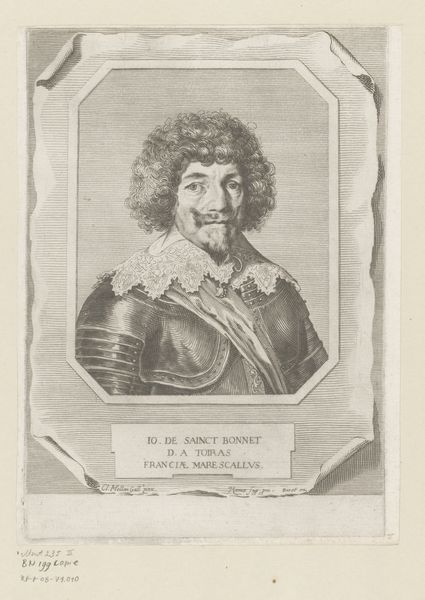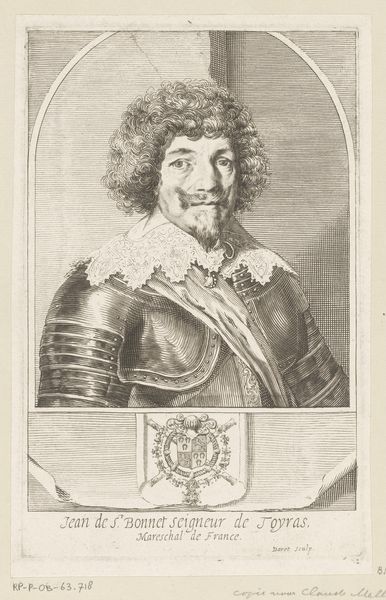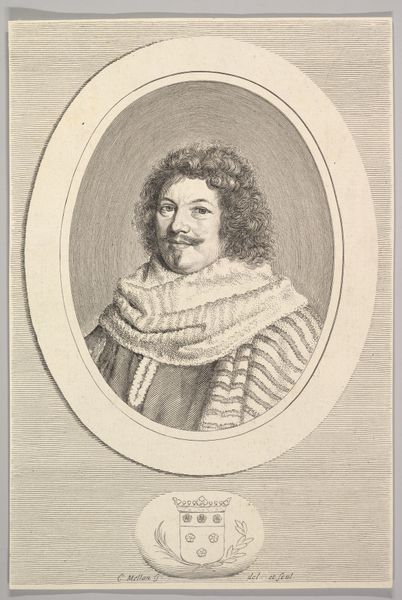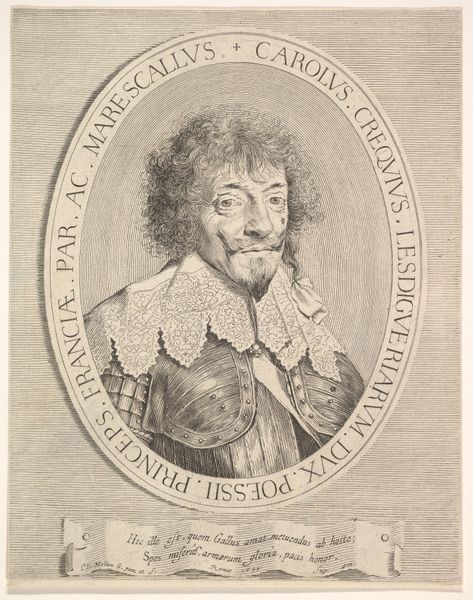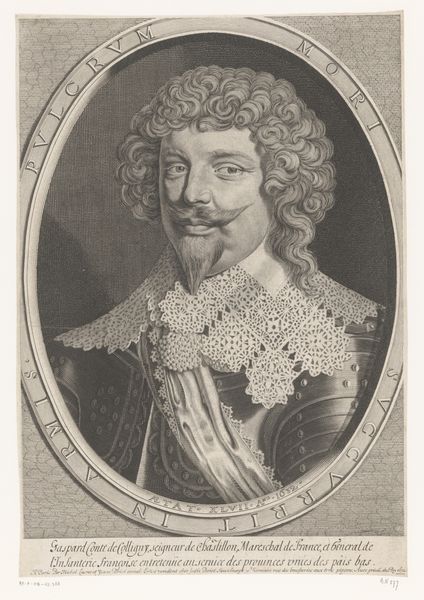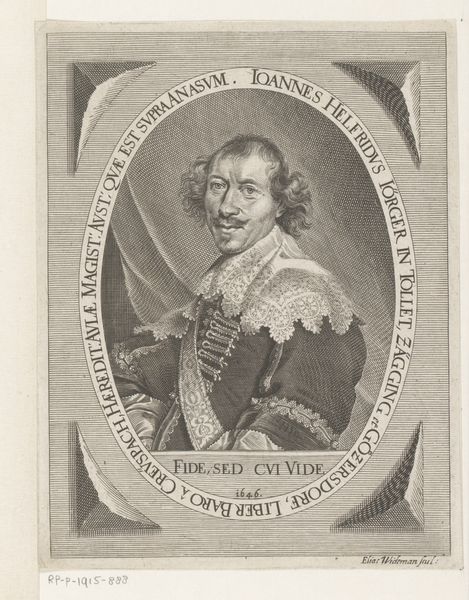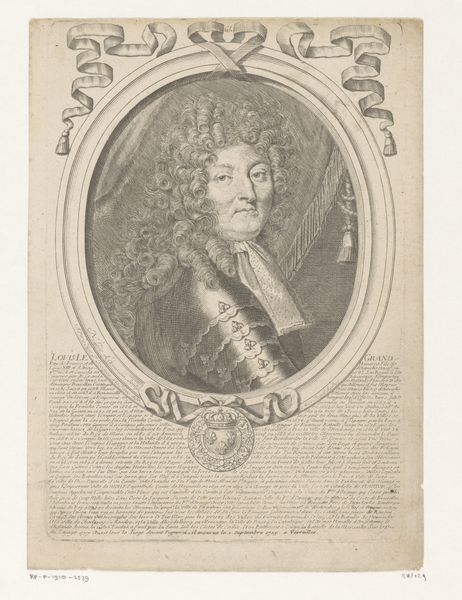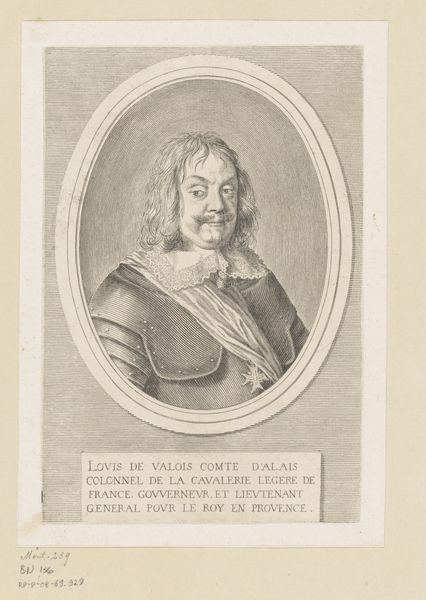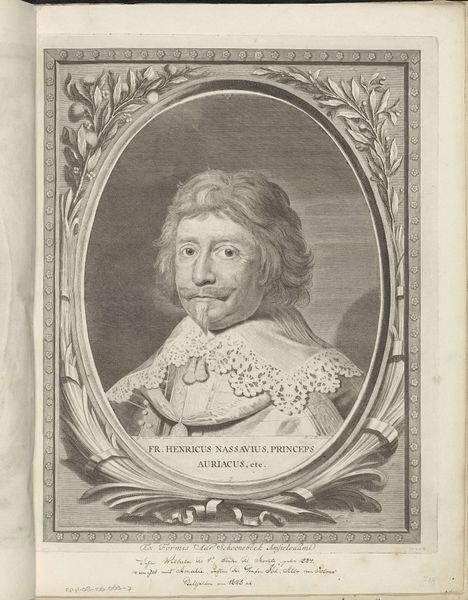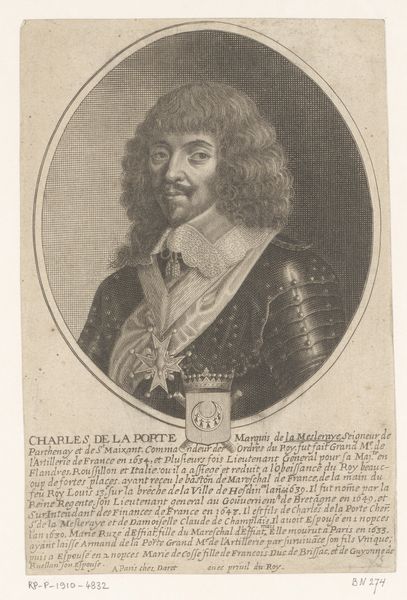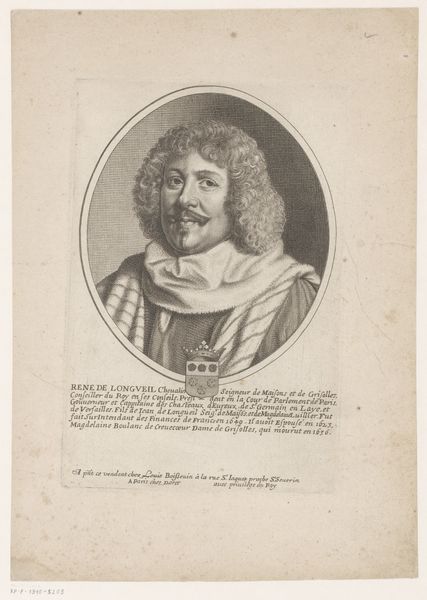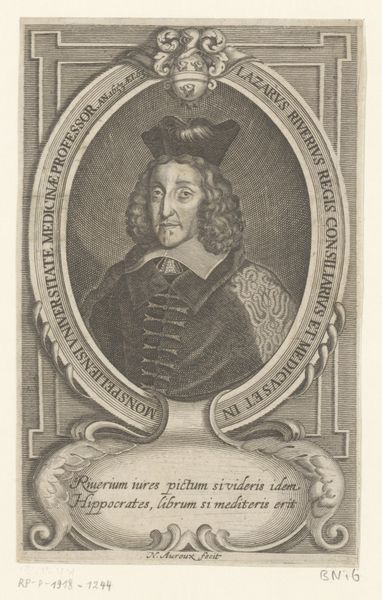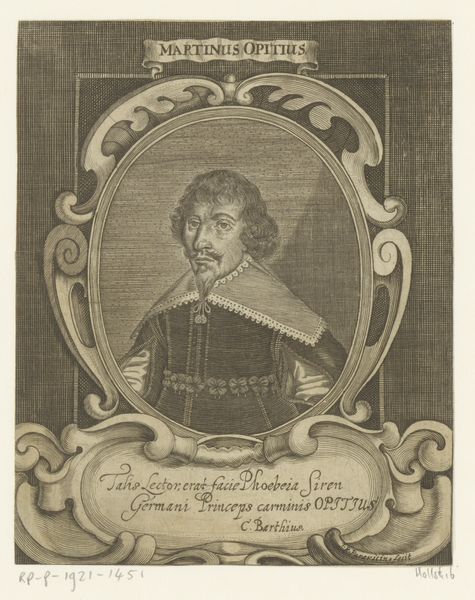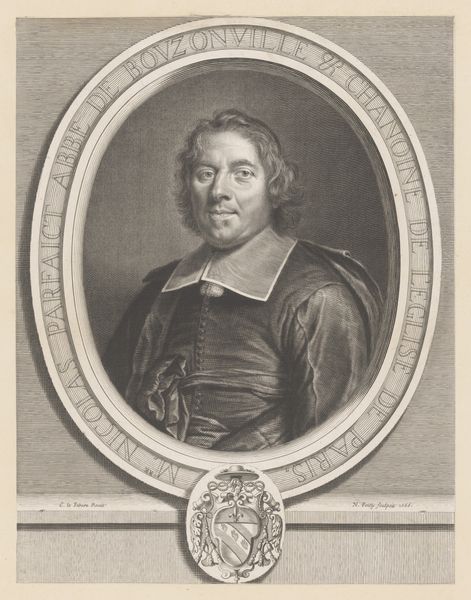
drawing, print, metal, engraving
#
portrait
#
drawing
#
baroque
# print
#
metal
#
men
#
history-painting
#
engraving
Dimensions: sheet: 9 1/8 x 7 5/16 in. (23.2 x 18.5 cm)
Copyright: Public Domain
Editor: Here we have Claude Mellan’s "Jean de Saint-Bonnet, marquis de Toiras," made between 1630 and 1636. It's an engraving, giving the piece a unique textural quality. There's an assertiveness to his gaze that really stands out. What can you tell me about it? Curator: Well, first consider the context. Mellan created this portrait during a time of significant social and political upheaval in France, during the consolidation of power under Louis XIII and the rise of Cardinal Richelieu. Jean de Saint-Bonnet, the subject, was a prominent military figure, a Maréchal. So, this image isn't just a depiction; it's a carefully constructed representation of power and status in a very hierarchical society. Think about how his armor and lace collar speak to wealth and military might. Who was this image for, and what message was it meant to send? Editor: So, it’s not just a picture, it's propaganda? Curator: The word "propaganda" might be too simplistic. It's more about constructing and reinforcing a certain social order and projecting authority. Mellan, as the artist, participates in that. Consider, for example, how printmaking allowed for wider dissemination of this image than a painting. How does that wider distribution reinforce the power structures of the time? What do you make of the subject’s direct gaze, particularly within this context of seventeenth-century French society? Editor: I guess that intense stare suggests confidence, control… maybe even a challenge? I hadn’t thought about it as part of a larger cultural message, more as a representation of an individual. Curator: Precisely! Seeing the artwork in relation to its context really transforms it, doesn't it? We start to see not just an individual but the forces that shaped his image and how that image in turn shaped perceptions of power and identity. Editor: It really does. Thanks! Now I’m thinking about who saw it and what they thought about it at the time, not just what I see now.
Comments
No comments
Be the first to comment and join the conversation on the ultimate creative platform.
